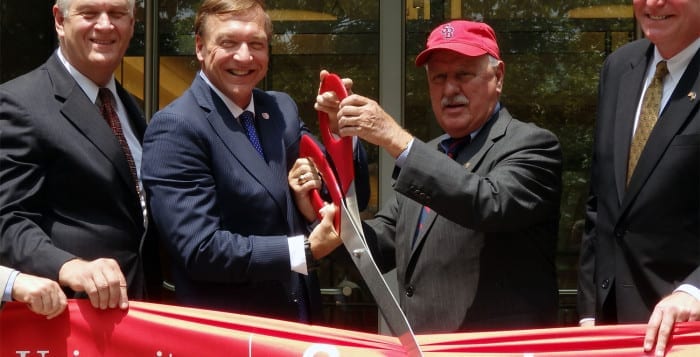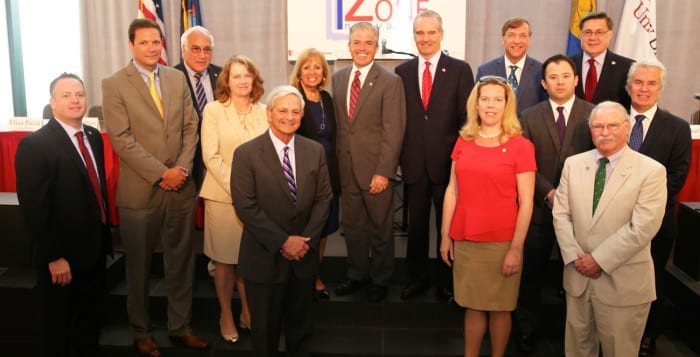A ferocious fire inside a dormitory building at Stony Brook University has left multiple floors and rooms damaged, the university said Monday.
The blaze broke out Saturday night in a student’s room on the second floor of O’Neill College, one of four residential buildings in Mendelsohn Quad, officials said. It took teams from various fire departments in the community to extinguish the flames and forced about 115 student residents to relocate to temporary housing, the university said in a statement.
The cause was still under investigation and there were no reported injuries.
“The fire was contained to one bedroom on E-wing [of the dormitory] with some damage to several room doors on multiple floors of the wing as well as some water and smoke damage,” the university said in a statement. “Professional and student staff within campus residences immediately began to work diligently to provide resident students with the resources and support needed, and continue to do so.”

University police initially reported the fire before crews arrived. The Setauket Fire Department responded to the call and received mutual aid from the Stony Brook, St. James and Port Jefferson departments. There, officials found that the dorm room where the flames originated was completely destroyed, officials said.
Setauket firefighters had to carry hoses up to the second floor because there were no standpipes there to connect to, due to the building’s decades-old architecture, the Setauket Fire Department said in a statement.
“Once water was brought to bear, most flames were extinguished and the remainder of the alarm resulted in cleaning out debris to ensure there was no extension to the fire,” the department said in a statement.
The university said the displaced residents would return to the building when it is properly restored.
“Currently there are professional fire restoration personnel on-site working to repair the facility in conjunction with our campus residence operations and risk management staff,” the university said in a statement.












